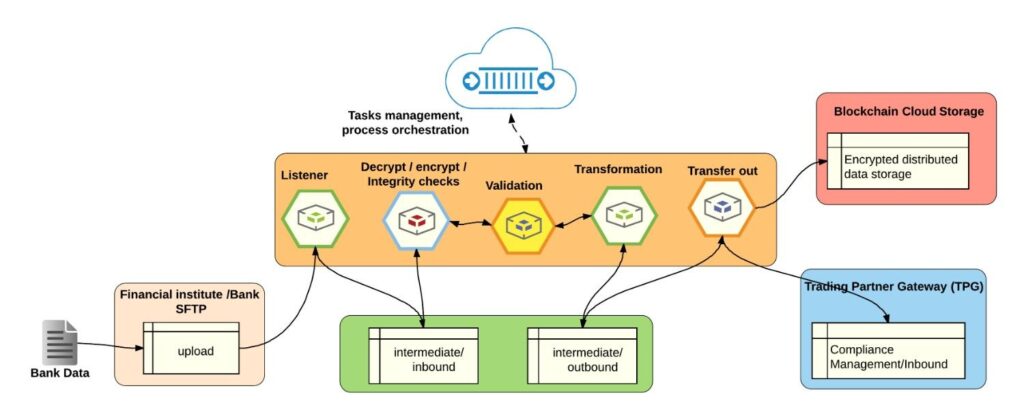In an MFT workflow built with RoboMQ’s MFT service, each of the functional components operates as microservices, depicted as hexagons in the figure below. These microservices follow task worker patterns and can be infinitely chained to enhance workflow functionality and streamline data transfers. The microservices are connected using AMQP-based Message Oriented Middleware (MOM), ensuring guaranteed delivery, seamless file processing, and metadata tracking to optimize file-based integration workflows.

Since RoboMQ’s Managed File Transfer (MFT) service is built on a state-of-the-art microservices-based Hybrid Integration Platform (HIP), it offers significant benefits through its containerized microservices architecture and hybrid cloud compatibility, ensuring scalable and efficient data integration.
1. Docker-Based Microservices Architecture
- Auto-healing – Automatically restarts services in case of failures, ensuring seamless workflow execution.
- Auto-scaling – Dynamically scales components based on workload. For instance, multiple transformers can run alongside a single validator for optimized data processing.
- Almost Zero deployment cost– Functional components are self-contained execution units, reducing installation and deployment expenses.
2. Flexible Deployment – On-Premise, Cloud, or Hybrid
RoboMQ’s MFT service can be deployed on-premise, in a private/public cloud, or in a hybrid setup, ensuring seamless data transfers while leveraging the best of both worlds.
3. Expandable Workflows for Enhanced Functionality
New capabilities can be chained to existing workflows, enabling scalable business process automation. A notable example is the integration of Blockchain Hyperledger with MFT workflows.






